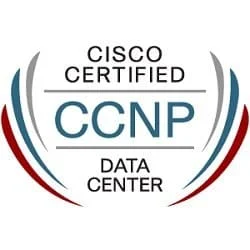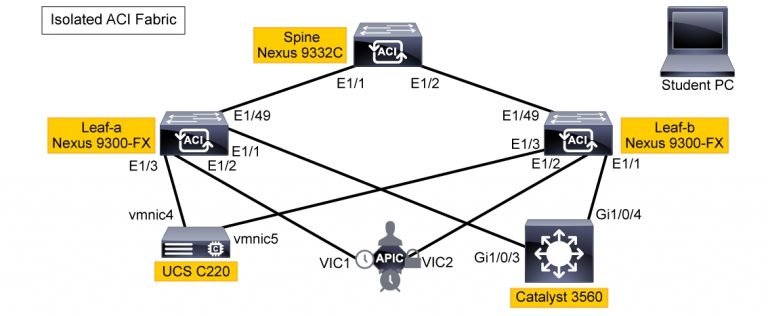CCNP Data Center DCACI – Implementing Cisco Application Centric Infrastructure

The DCACI Implementing Cisco Application Centric Infrastructure course is part of the Cisco CCNP Data Center track . The Implementing Cisco Application Centric Infrastructure (DCACI) course focuses on implementing, managing, and monitoring the Cisco ACI solution in data center environments. The primary objectives of the course include understanding the basic concepts of Cisco ACI, its architecture and key components, implementing Cisco ACI, configuring the APIC controller, creating tenants, application profiles, contracts, and endpoint groups (EPGs), configuring and managing Layer 2 and Layer 3 networks in a Cisco ACI environment, integrating virtual and physical network services within a Cisco ACI environment, using RESTful APIs and other automation tools to manage and orchestrate Cisco ACI operations, monitoring ACI infrastructure and troubleshooting common issues, configuring and managing ACI infrastructure security, and managing identities. The course contributes to the preparation of the CCNP Data Center Certification exam (Exam 300-620) .
Course Objectives
Below is a summary of the main objectives of the DCACI Implementing Cisco Application Centric Infrastructure Course :
- Understanding the basic concepts of Cisco ACI and its architecture.
- Cisco ACI implementation and APIC controller configuration.
- Create tenants, application profiles, contracts, and endpoint groups (EPGs).
- Configuring and managing Layer 2 and Layer 3 networks in a Cisco ACI environment.
- Using RESTful APIs and automation tools to manage Cisco ACI operations.
- Mastering the integration of Cisco ACI with other data center technologies and services.
- Developing skills in troubleshooting and optimizing Cisco ACI deployments.
- Exploring best practices for securing and maintaining Cisco ACI infrastructure.
Course Certification
This course helps you prepare to take the:
Exam 300-620 DCACI Implementing Cisco Application Centric Infrastructure;
Course Outline
- Introducing Cisco ACI Fabric Infrastructure and Basic Concepts
- Introduction
- What Is Cisco ACI?
- Cisco ACI Topology and Hardware
- Cisco ACI Object Model
- Faults, Event Record, and Audit Log
- Cisco ACI Fabric Discovery
- Validate Fabric Discovery
- Configure NTP
- Cisco ACI Access Policies
- Create Access Policies and vPC
- Describing Cisco ACI Policy Model Logical Constructs
- Introduction
- Cisco ACI Logical Constructs
- Tenant
- Virtual Routing and Forwarding
- Bridge Domain
- Endpoint Group
- Application Profile
- Tenant Components Review
- Adding Bare-Metal Servers to Endpoint Groups
- Enable Layer Connectivity in the Same EPG
- Contracts
- Enable Inter-EPG Layer Connectivity
- Describing Cisco ACI Basic Packet Forwarding
- Introduction
- Endpoint Learning
- Basic Bridge Domain Configuration Knob
- Enable Inter-EPG Layer Connectivity
- Compare Traffic Forwarding Methods in a Bridge Domain
- Introducing External Network Connectivity
- Introduction
- Cisco ACI External Connectivity Options
- External Layer Network Connectivity
- Configure External Layer Connection
- External Layer Network Connectivity
- Configure External Layer (LOut) Connection
- Introducing VMM Integration
- Introduction
- VMware vCenter VDS Integration
- Resolution Immediacy in VMM
- Alternative VMM Integrations
- Integrate APIC With VMware vCenter Using VMware VDS
- Describing Layer to Layer Integrations
- Introduction
- Service Appliance Insertion Without ACI L-L Service Graph
- Service Appliance Insertion via ACI L-L Service Graph
- Service Graph Configuration Workflow
- Service Graph PBR Introduction
- Explaining Cisco ACI Management
- Introduction
- Out-of-Band Management
- In-Band Management
- Syslog
- Simple Network Management Protocol
- Configuration Backup
- Authentication, Authorization, and Accounting
- Role-Based Access Control
- Cisco ACI Upgrade
- Collect Tech Support
Laboratory Activities
- Validate Fabric Discovery
- Configure Network Time Protocol (NTP)
- Create Access Policies and Virtual Port Channel (vPC)
- Enable Layer 2 Connectivity in the Same Endpoint Group (EPG)
- Enable Inter-EPG Layer 2 Connectivity
- Enable Inter-EPG Layer 3 Connectivity
- Compare Traffic Forwarding Methods in a Bridge Domain
- Configure External Layer 2 (L2Out) Connection
- Configure External Layer 3 (L3Out) Connection
- Integrate Application Policy Infrastructure Controller (APIC) With VMware vCenter
- Using VMware Distributed Virtual Switch (DVS)
Course Mode
Instructor-Led Remote Live Classroom Training;
Trainers
Trainers are Cisco Official Instructors and certified in other IT technologies, with years of hands-on experience in the industry and in Training.
Lab Topology
For all types of delivery, the Trainee can access real Cisco equipment and systems in our laboratories or directly at the Cisco data centers remotely 24 hours a day. Each participant has access to implement the various configurations thus having a practical and immediate feedback of the theoretical concepts.
Here are some Cisco Labs network topologies available:

Course Details
Course Prerequisites
Attendance at the Cisco CCNA Course and the VMware VCP-DCV Course is recommended .
Course Duration
Intensive duration 5 days
Course Frequency
Course Duration: 5 days (9.00 to 17.00) - Ask for other types of attendance.
Course Date
- Cisco DCACI Course (Intensive Formula) – On request – 9:00 – 17:00
Steps to Enroll
Registration takes place by asking to be contacted from the following link, or by contacting the office at the international number +355 45 301 313 or by sending a request to the email info@hadartraining.com


